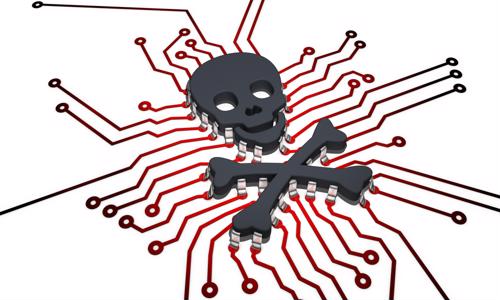
R4IoT: The latest threat to connected security
By Max BurkhalterFebruary 3, 2023
As the internet of things (IoT) expands, so does your attack surface — the number of devices and access points a hacker can exploit. It's the nature of the beast, of course, but it pays to know what kind of techniques attackers are using more often for targeted IoT hacks. If you're aware of potential danger, you can choose better security. Your protections must escalate with cyber threats and fight the enormous risks associated with IoT compromise or data loss.
So, what are hackers using to harm your network security? R4IoT is certainly "up there". It's one of the fiercest disruption techniques to emerge in cyberspace within the last several years. With tighter encryption, more incisive monitoring tools and smarter threat intelligence, you can stay on the lookout for this devastating criminal weapon. But, what is it? And why should every organization relying on the IoT know its name?
Ransomware that runs riot
R4IoT is a new strain of ransomware that uses countless bots to scan weak endpoints (devices) in the internet of things, telling them to download malicious software. As Forescout explains, these viruses tended to focus on pure encryption/decryption techniques until around 2019, when larger exfiltration and extortion campaigns became possible. R4IoT is the latest type of ransomware to carry out complex, widespread attacks on your network, specifically designed for the IoT. Cyber criminals can hide in plain sight for days, observing how devices interact before causing several types of breaches at once.
In 2022, Forescout ran a simulation — the first of its kind — that demonstrated how R4IoT exploits two trends: the growth in IoT devices and their convergence with operating systems such as lighting, heating, security and industrial maintenance trackers. In the example, a hacker manages to slip within a vulnerable IP camera that hasn't been sufficiently protected. They encrypt sensitive files, add a ransom and shut off an HVAC system. This takes fewer than five minutes.
The Hacker News colors the issue in further, saying that R4IoT "could entail compromising a machine in the corporate network to not only drop ransomware, but also retrieve additional payloads from a remote server to deploy cryptocurrency miners and launch DDoS (direct denial of service) attacks."

Where to start improving security to match
While R4IoT is a pernicious threat, you can make moves to counter it. Zero-trust security, for example, wraps more protection around every device in your network. This involves locking access with a public key infrastructure (PKI) and multi-factor authentication — assuming that no-one should be trusted until they verify who they are using more than a log-in screen.
Equally, you should take on security tools or managed services that can check on every device's software, ensuring it's behaving as it should be. Since this kind of malware can linger for several days or more in your endpoints, gathering intel, there's time to root out anomalies and combat R4IoT before it executes an attack.
We refine your encryption commitments
Your I/O devices and Ethernet connections are more secure, too, with Perle System for backup. We lock your IoT endpoint servers down with advanced encryption, ciphers and intrusion prevention. Speak to us for a consultation on your battle against malware or any cyber threat today.



